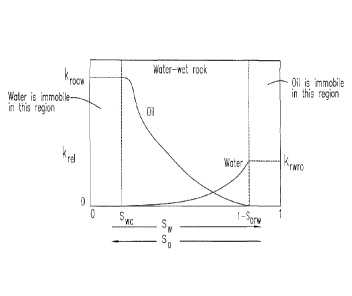Some of the information on this Web page has been provided by external sources. The Government of Canada is not responsible for the accuracy, reliability or currency of the information supplied by external sources. Users wishing to rely upon this information should consult directly with the source of the information. Content provided by external sources is not subject to official languages, privacy and accessibility requirements.
Any discrepancies in the text and image of the Claims and Abstract are due to differing posting times. Text of the Claims and Abstract are posted:
| (12) Patent: | (11) CA 2916238 |
|---|---|
| (54) English Title: | BIOLOGICAL AUGMENTATION OF LOW SALINITY WATER FLOODING TO IMPROVE OIL RELEASE USING NUTRIENT SUPPLEMENTATION OF INJECTED LOW SALINITY WATER |
| (54) French Title: | AUGMENTATION BIOLOGIQUE D'INONDATION D'EAU A FAIBLE SALINITE POUR AMELIORER LA LIBERATION DE PETROLE AU MOYEN DE SUPPLEMENT NUTRITIF D'EAUAFAI BLE SALINITE INJECTEE |
| Status: | Granted |
| (51) International Patent Classification (IPC): |
|
|---|---|
| (72) Inventors : |
|
| (73) Owners : |
|
| (71) Applicants : |
|
| (74) Agent: | MACRAE & CO. |
| (74) Associate agent: | |
| (45) Issued: | 2020-02-04 |
| (86) PCT Filing Date: | 2014-06-18 |
| (87) Open to Public Inspection: | 2014-12-24 |
| Examination requested: | 2018-11-20 |
| Availability of licence: | N/A |
| (25) Language of filing: | English |
| Patent Cooperation Treaty (PCT): | Yes |
|---|---|
| (86) PCT Filing Number: | PCT/US2014/043039 |
| (87) International Publication Number: | WO2014/205137 |
| (85) National Entry: | 2015-12-18 |
| (30) Application Priority Data: | |||||||||
|---|---|---|---|---|---|---|---|---|---|
|
A method of enhancing oil recovery includes the step of determining a specific nutrient package used to initiate a microbiological response under actual reservoir conditions in combination with low salinity water injection. Once determined, the specific nutrient package is applied to at least one targeted well to stimulate resident microorganisms such that size or hydrophobic properties are beneficially altered so that interaction with oil contained in a reservoir rock formation is improved.
La présente invention concerne un procédé d'amélioration de l'extraction de pétrole, lequel procédé comprend l'étape consistant à déterminer un ensemble de nutriments spécifiques utilisé en vue de lancer une réponse microbiologique dans des conditions réelles de couche pétrolifère en association avec une injection d'eau à faible salinité. Une fois déterminé, l'ensemble de nutriments spécifiques est appliqué à au moins un puits ciblé en vue de stimuler les microorganismes résidents de sorte que la taille ou les propriétés hydrophobes soient avantageusement modifiées de manière à améliorer une interaction avec le pétrole contenu dans une formation rocheuse de couche pétrolifère.
Note: Claims are shown in the official language in which they were submitted.
Note: Descriptions are shown in the official language in which they were submitted.

For a clearer understanding of the status of the application/patent presented on this page, the site Disclaimer , as well as the definitions for Patent , Administrative Status , Maintenance Fee and Payment History should be consulted.
| Title | Date |
|---|---|
| Forecasted Issue Date | 2020-02-04 |
| (86) PCT Filing Date | 2014-06-18 |
| (87) PCT Publication Date | 2014-12-24 |
| (85) National Entry | 2015-12-18 |
| Examination Requested | 2018-11-20 |
| (45) Issued | 2020-02-04 |
There is no abandonment history.
Last Payment of $347.00 was received on 2024-06-04
Upcoming maintenance fee amounts
| Description | Date | Amount |
|---|---|---|
| Next Payment if standard fee | 2025-06-18 | $347.00 if received in 2024 $362.27 if received in 2025 |
| Next Payment if small entity fee | 2025-06-18 | $125.00 |
Note : If the full payment has not been received on or before the date indicated, a further fee may be required which may be one of the following
Patent fees are adjusted on the 1st of January every year. The amounts above are the current amounts if received by December 31 of the current year.
Please refer to the CIPO
Patent Fees
web page to see all current fee amounts.
| Fee Type | Anniversary Year | Due Date | Amount Paid | Paid Date |
|---|---|---|---|---|
| Application Fee | $400.00 | 2015-12-18 | ||
| Maintenance Fee - Application - New Act | 2 | 2016-06-20 | $100.00 | 2016-05-24 |
| Maintenance Fee - Application - New Act | 3 | 2017-06-19 | $100.00 | 2017-04-25 |
| Maintenance Fee - Application - New Act | 4 | 2018-06-18 | $100.00 | 2018-05-23 |
| Request for Examination | $800.00 | 2018-11-20 | ||
| Maintenance Fee - Application - New Act | 5 | 2019-06-18 | $200.00 | 2019-05-09 |
| Final Fee | 2020-01-02 | $300.00 | 2019-12-18 | |
| Maintenance Fee - Patent - New Act | 6 | 2020-06-18 | $200.00 | 2020-06-17 |
| Maintenance Fee - Patent - New Act | 7 | 2021-06-18 | $204.00 | 2021-06-16 |
| Maintenance Fee - Patent - New Act | 8 | 2022-06-20 | $203.59 | 2022-06-15 |
| Maintenance Fee - Patent - New Act | 9 | 2023-06-19 | $210.51 | 2023-04-26 |
| Maintenance Fee - Patent - New Act | 10 | 2024-06-18 | $347.00 | 2024-06-04 |
Note: Records showing the ownership history in alphabetical order.
| Current Owners on Record |
|---|
| TITAN OIL RECOVERY, INC. |
| Past Owners on Record |
|---|
| None |